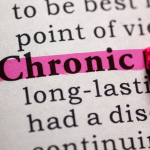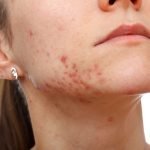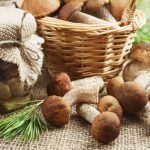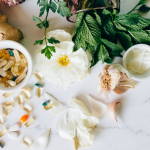Sceletium tortuosum: A South African Plant for Mood and Stress
JEREMY APPLETON, ND
Sceletium tortuosum (aka Mesembryanthemum tortuosum) is a South African plant medicine with a centuries-long history of use. Not all Sceletium preparations are alike, owing to the presence or absence of standardization, differences in the concentration of bioactive mesembrine alkaloids, level of demonstrated clinical efficacy, and documented freedom from undesirable psychoactive effects and risks.
The medicinal use of Sceletium is thought to date as early as the 4th century AD.1 The earliest written records available for review are from 1662-1685.2 In the 18th century, the celebrated South African explorer, Peter Kolben, stated that Sceletium was “the greatest cheerer of the spirits, and the noblest restorative in the world.”3 Khoekhoen (formerly also known as Hottentots), a traditionally nomadic pastoralist indigenous population in South Africa, used Sceletium as a relaxant, intoxicant, and entheogen. Generic, non-standardized Sceletium goes by the common names kanna, channa, and kougoed.
Sceletium is considered a nootropic plant.4 The most common overlap between traditional use and modern clinical efficacy data for S tortuosum is in relieving physical and emotional stress and inducing a sense of well-being. Published case reports and observations by doctors, psychologists, and psychiatrists suggest clinical efficacy for depressive disorders, anxiety, social phobia, and low libido. It has also been used to facilitate psychotherapeutic programs or sessions in alcohol rehabilitation and smoking cessation.5 The term kanna is also used outside of South Africa as a slang for various generic preparations that might contain Sceletium.6 In South Africa, Sceletium is registered as a spasmolytic and antidepressant.1
Dosing of Sceletium
Source information on dosing of Sceletium tortuosum is reviewed in the African Herbal Pharmacopoeia, which suggests that a safe dose would be in the range of 50-200 mg of dry herb, taken 2-3 times per day, in the form of tablets or capsules.7 Dosing of 100-200 mg 2-3 times daily has been reported, for a total daily dose in the range of 200-600 mg/day of raw herb. Doses of up to 5000 mg of dried herb have been used,2,8 but safety information for such doses is lacking.
A standardized proprietary preparation of Sceletium has been studied in clinical trials at doses of 12.5-50 mg per day. This product is standardized to contain 0.35-0.45% total alkaloids,9 providing ≥60% mesembrenone + mesembrenol contribution, ≤20% mesembrine contribution, and ≥5% mesembranol contribution to total alkaloids.10
Taxonomy
Eight species are recognized in the genus Sceletium (which form part of the genus Mesembryanthemum). In addition to S tortuosum, members of this genus include S archeri, S crassicaule, S emarcidum, S exalatum, S expansum, S ladismithiense, and S varians.
Sceletium tortuosum is usually distinguished from other Sceletium species by comparing the vegetative, flower, fruit, and seed characteristics. However, S tortuosum shares various morphological similarities with other Sceletium species, such as leaf shape, size, and venation pattern, and has similar flower and seed coloration as S crassicaule. The 2 species also have sympatric distribution (and frequently grow together), as well as being the only 2 species in the genus that produce the 4 key alkaloids.11
Research on Sceletium tortuosum
Sceletium Alkaloids
The bioactivity of Sceletium tortuosum is attributed to its alkaloid content. The alkaloid profile varies considerably, depending on regional plant source.12 The 4 major alkaloids present in the plant are mesembrine, mesembrenone, mesembrenol, and mesembranol, collectively referred to as the mesembrine alkaloids. The total alkaloid content of Sceletium is highly variable, ranging from as little as 0.05% to as much as 2.3%. The composition of the alkaloids themselves may also vary considerably. Mesembrine alkaloids have been well characterized.13 HPLC methods for the quantitative analysis of Δ(7)mesembrenone, mesembranol, mesembrenone, mesembrine, and epimesembranol in Sceletium plant material have been developed and validated.14 Methods to investigate the alkaloid composition and relative quantification of ingredients have been developed.15 Samples of Sceletium have shown mesembrine to represent from 0-90% of total alkaloids.14,16 It has also been documented that fermentation can transform one alkaloid to another, eg, mesembrine to delta-7 mesembrenone.16,17 This variability highlights the importance, for safety and efficacy, of using a standardized extract.
Preclinical Research
In-vitro Studies
In 2011, a standardized proprietary preparation of S tortuosum, as well as its 3 principal constituent alkaloids, were individually tested for pharmacological activities that might be relevant to the ethnopharmacological uses of the plant.18 A standardized ethanolic extract was prepared from dried plant material, along with the purified alkaloids mesembrine, mesembrenone, and mesembrenol. These were tested on a panel of receptors, enzymes, and other drug targets, and for cytotoxic effects on mammalian cells. The extract was found to be “a potent blocker in 5-hydroxy-tryptamine (5-HT; serotonin) transporter binding assays (IC50 4.3 µg/mL) and had powerful inhibitory effects on phosphodiesterase 4 (PDE-4) (IC50 8.5 µg/mL), but not other phosphodiesterases.18 No cytotoxic effects were apparent. Mesembrine was the most active alkaloid against the 5-HT transporter (Ki 1.4 nM), while mesembrenone was active against the 5-HT transporter and PDE-4 (IC50’s <1 µM). Researchers concluded that activity of S tortuosum extract on the 5-HT transporter and PDE-4 may explain the clinical effects of preparations made from this plant. The activities relate to the presence of alkaloids, predominantly mesembrenone, since this particular extract is standardized to be higher in mesembrenone and lower in mesembrine.18
In 2012, Shikanga and colleagues evaluated the in-vitro permeability of the 4 major S tortuosum alkaloids (ie, mesembrine, mesembrenone, mesembrenol, and mesembranol) across porcine intestinal, sublingual, and buccal tissues in their pure form and as 3 different crude plant extracts, namely water, methanol, and an acid-base alkaloid-enriched extract.19 Sceletium alkaloids demonstrated comparable permeability to the highly permeable compound, caffeine. Study results confirmed the ability of S tortuosum alkaloids, in purified or crude extract form, to permeate intestinal, buccal, and sublingual mucosal tissues.
The 2 major active alkaloids, mesembrine and mesembrenone, are still in the process of being more fully characterized pharmacologically. The consensus to date is that they are serotonin reuptake inhibitors, which provides a rationale for the plant’s traditional use as an antidepressant; however, other actions, such as mesembrenone’s PDE-4 inhibitory activity described above, continue to be studied.20
Animal Research
Studies of the effects of Sceletium tortuosum and its alkaloids have been conducted using a variety of animal models. Gericke and Viljoen reviewed several of these studies,4 which included findings of decreased excessive barking in dogs, decreased cage- and travel-stress in cats, improved dementia in dogs and cats,21 reduced anxiety in horses,22 and decreased stress in chicks.23
In 2011, Smith and colleagues performed a study on rats to assess the effects of Sceletium on stress.24 They administered placebo, 5 mg/kg, or 20 mg/kg of Sceletium tortuosum extract to male Wistar rats by daily oral gavage for 17 days. Fifty percent of rats were exposed to repeated restraint stress lasting 1 hour per day for the last 3 days of treatment. Immediately following the restraint session, on the final day of restraint, behavioral changes in response to stress were assessed. The lower dose of Sceletium was found to decrease restraint stress and stress-induced corticosterone elevation.24
A 2016 rat study constructed graphical representations of brain activity (electropharmacograms) in response to gavage administration of 3 dosages (2.5, 5.0, and 10.0 mg/kg) of Sceletium standardized extract.25 These were compared to electropharmacograms for rolipram and citicoline. The animals were evaluated in 3 phases: a 45-min pre-drug period, a 5-min rest period, and 5 hours of recording. Brain activity was recorded via quantitative EEG, and data were electronically transmitted. Spectral power was assessed for 8 frequency ranges: delta, theta, alpha1, alpha2, beta1a, beta1b, beta2, and gamma power. Sceletium attenuated all frequency ranges, to varying degrees, in a dose-dependent manner. Similarities were observed between the tested proprietary standardized extract and other previously tested botanical extracts (Oenothera biennis, Actaea racemosa, Ginkgo biloba, and Rhodiola rosea) and citicoline. Similarity to the electropharmacograms of the synthetic PDE-4 inhibitor, rolipram, suggests that Sceletium might similarly affect mood and cognition.25
Human Clinical Research
In 2013, Dr David Terburg and colleagues tested the effects of Sceletium extract in a pharmacologic study.26 Their goal was to assess anxiety-related activity in the amygdala (via functional MRI) by detecting hyper-responsivity to mild threats. In a double-blind, placebo-controlled, cross-over design, 16 healthy participants’ brains were scanned during a perceptual-load and an emotion-matching task, which included exposure to fearful faces. After a single 25-mg dose, Sceletium extract was shown to attenuate reactivity within the amygdala. Follow-up analysis on the emotion-matching task showed that amygdala-hypothalamus coupling had also decreased. According to the investigators, “These results demonstrate, for the first time, the attenuating effects of S. tortuosum on the threat circuitry of the human brain and provides supporting evidence that the dual 5-HT reuptake inhibition and PDE4 inhibition of this extract might have anxiolytic potential by attenuating subcortical threat responsivity.”26
Recent research suggests that PDE-4 plays a critical role in regulating cognition via the PDE-4-cyclic AMP (cAMP) cascade signaling that involves the phosphorylated cAMP response element binding protein (CREB). To examine the neurocognitive effects of Sceletium extract and assess its safety and tolerability, researchers conducted a randomized, double-blind, placebo-controlled, cross-over study of 21 healthy subjects (mean age 54.6 years).27 Subjects received either 25 mg of S tortuosum extract or placebo once daily for 3 weeks. A battery of neuropsychological tests was used, including CNS Vital Signs and the Hamilton Depression Rating Scale (HAM-D). Assessments were performed at baseline and regular intervals. Side effects were monitored using a treatment emergent adverse events scale.
Compared to placebo, Sceletium extract significantly improved key cognitive domains, specifically cognitive set flexibility (p<0.032) and executive function (p<0.022).27 Cognitive flexibility is the ability to switch attention between 2 or more tasks, the ability to adapt to rapidly changing directions, and the ability to intelligently utilize the information. It is required for impulse control, decision-making, and strategy formation. Executive function is required for taking initiative, discipline, making proper judgments, and operating in favor of an abstract reward. It may also relate to a spontaneous ability to act and exercising goal-directed behavior.
Positive changes in mood and sleep were also demonstrated, although changes in the HAM-D scores did not reach statistical significance; this was an expected outcome in a healthy, non-depressed population. Sceletium was well tolerated. The authors concluded that the cognitive-enhancing effects of Sceletium extract were likely due to its impact on the PDE-4-cAMP-CREB cascade, offering potential application to support of cognitive function in older individuals.27
Another study sought to characterize the psychophysiological effects of a single dose of Sceletium extract of either 25 mg or 50 mg in comparison to placebo.28 The study employed a novel methodology that uses quantitative EEG software combined with eye-tracking, which allows for rapid detection and sensitive analysis of spectral EEG changes during cognitive and emotional challenges. In the study, 60 subjects were given a series of mental tasks and exposed to emotional audio-visual clips before and 2 hours after taking Sceletium extract or placebo. The tests comprised 5 cognitive challenges and 4 emotional challenges.
Compared to placebo, Sceletium promoted increases in power of brain wave frequencies (frontal delta, theta, alpha1, and alpha2) during several tasks. Increases in these frontal brain frequencies have been related to memory and attention, thus suggesting a positive effect of Sceletium on cognition and emotional processes in the brain.28
The following year, the same research group did a follow-up study of 60 healthy subjects (ages 50-80) to measure the effects of 25 or 50 mg of Sceletium extract, taken daily for 6 weeks, as compared to placebo.29 EEG measurements were taken before and 1 hour after Sceletium intake. Six cognitive tests were performed and 3 questionnaires were administered, including Profile of Mood States, Hamilton Anxiety Rating Scale (HAM-A), and a sleep questionnaire.
Quantitative EEG showed increases of delta activity during a d2 cognitive test in the fronto-temporal region of the brain. Following the 50 mg dose, higher theta activity was observed during relaxation and performance of the d2-test. Statistically significant improvements were observed during an arithmetic calculation test and number connection test. The HAM-A scores were significant decreased after 6 weeks (p=0.03). The results suggested that Sceletium improves cognitive function, reduces anxiety, and may enhance mood in healthy people.29
In a 2-part study, researchers used a double-blind, placebo-controlled, between-subject experimental design to examine the effects of a single 25-mg dose of Sceletium extract on induced stress/anxiety response in 20 young healthy volunteers.30 To induce feelings of stress/anxiety, subjects completed 20 minutes of a multitasking framework in Part 1 and a brief simulated public speaking task in Part 2. In Part 1, subjective experiences of mood at baseline, pre-stress induction, and post-stress induction were measured. In Part 2, subjective experience of anxiety as well as physiological stress indicators (heart rate, galvanic skin response) at baseline, pre-stress induction, during stress induction, and post-stress induction were measured. No treatment effect was observed in Part 1; however, in Part 2, subjective anxiety levels and heart rate were positively impacted. The combined results suggested that a single dose of Sceletium extract can ameliorate induced stress/anxiety in healthy volunteers. Regarding the lack of observable treatment effect in Part 1, the authors opined that the “stressor was too ‘mild’ to allow a treatment effect to be observed in those subjective self-report measures.” It is also likely that daily administration, as opposed to a single dose, would produce a more pronounced effect.30
Safety & Toxicity
Only 1 commercially available Sceletium extract (the standardized preparation discussed above) has undergone in-vitro, animal, and human clinical research for safety and efficacy.2,9,10,25-32 Other Sceletium extracts have undergone some, but not all, of these types of tests.
A 14-day oral toxicity study of Wistar rats was conducted using 5 different daily doses of Sceletium.9 Additionally, a 90-day oral toxicity study was conducted using 5 lower doses of Sceletium. To evaluate the stress and calming effects of the plant, a functional observation battery of tests was employed. In neither study were treatment-related adverse effects or mortality observed.
In a randomized, double-blind, parallel-group, placebo-controlled, single-center study of 37 healthy adults, Nell and colleagues evaluated the safety and tolerability of a 2:1 standardized extract of Sceletium tortuosum.2 Participants were randomized equally to receive either 8 mg or 25 mg of Sceletium extract or a placebo, to be taken once daily for 3 months. In the evaluation of safety and tolerability of Sceletium during the 3-month study, no differences were noted between the 3 treatments in terms of vital signs, body weight, 12-lead ECG, or physical examination findings. Moreover, no significant changes were noted in hematology or biochemistry parameters. Both doses of Sceletium extract were well tolerated. The most reported adverse effect was headache, followed by upper respiratory tract infections and abdominal pain, although all these were all more prevalent in the placebo group. Beneficial effects on well-being, coping with stress, and sleep were voluntarily noted by some subjects taking the Sceletium extract.
One standardized extract of S tortuosum has been identified as Generally Recognized as Safe (GRAS) by self-affirmation.31 It is safe to include in beverages up to 50 mg per serving, and in bars and snacks up to 25 mg per serving.32 High-resolution mass spectrometry testing has revealed adulteration of some commercially available “kanna,” with ephedrine, a stimulant that has been banned in herbal products and supplements.33 Practitioners should therefore exercise caution when recommending unstudied, unapproved, or non-standardized forms of S tortuosum.
Psychoactive Properties
Traditional use of Sceletium plants in psychoactive preparations in South Africa has been mentioned in the ethnobotanical literature. Anecdotal reporting of such use goes back over 300 years, and includes various methods of ingestion.34 Observations by Paterson in 1789, as well as reports of contemporary users, suggested combinations with cannabis. Contrary to some popular reports, the view that “kougoed’ or Sceletium alkaloids are hallucinogenic has been disputed.35,36 Some psychoactive properties of Sceletium have been attributed to mesembrine,33-35 although the precise effects of the various alkaloids have not been established, and they likely interact with one another in vivo. Low-mesembrine Sceletium extracts have been shown to positively affect mood and cognition without intoxicating effects.26-30
Conflict of Interest Statement: The author works for PLT Health Solutions, which distributes the proprietary form of Sceletium tortuosum extract mentioned in this article.
References:
- Muszyńska B, Łojewski M, Rojowski J, et al. Natural products of relevance in the prevention and supportive treatment of depression. Psychiatr Pol. 2015;49(3):435-453.
- Nell H, Siebert M, Chellan P, Gericke N. A randomized, double-blind, parallel-group, placebo-controlled trial of Extract Sceletium tortuosum (Zembrin) in healthy adults. J Altern Complement Med. 2013;19(11):898-904.
- Kolben P. The Present State of the Cape of Good Hope. Volume 1, 2nd ed. Medley G, translator. London, England: W. Innys and R. Matiby; 1738.
- Gericke N, Viljoen AM. Sceletium—A review update. J Ethnopharmacol. 2008;119(3):653-663.
- Gericke N. Clinical application of selected South African medicinal plants. Aus J Med Herbalism. 2001;13(1):3-15.
- Weiss S. This Legal Supplement Made Me Roll Like I’d Taken MDMA. March 9, 2020. Available at: https://www.vice.com/en_us/article/v74xym/kanna-herbal-legal-mdma. Accessed January 4, 2021.
- Brendler T, Eloff JN, Gurib-Fakim A, Phillips LD, eds. African Herbal Pharmacopoeia. Baie du Tombeau, Mauritius: Association for African Medicinal Plants Standards (AAMPS); 2010:205-208.
- Watt JM, Breyer-Brandwijk MG. The Medicinal and Poisonous Plants of Southern and Eastern Africa. London, England: E & S Livingstone Ltd; 1960:1457.
- Murbach TS, Hirka G, Szakonyiné IP, et al. A toxicological safety assessment of a standardized extract of Sceletium tortuosum (Zembrin®) in rats. Food Chem Toxicol. 2014;74:190-199.
- Specification Sheet: Zembrin. April 27, 2020. Nektium Pharma S.L., Las Palmas, Spain.
- Shikanga EA, Viljoen AM, Vermaak I, Combrinck S. A novel approach in herbal quality control using hyperspectral imaging: discriminating between Sceletium tortuosum and Sceletium crassicaule. Phytochem Anal. 2013;24(6):550-555.
- Zhao J, Khan IA, Combrinck S, et al. 1H-NMR and UPLC-MS metabolomics: Functional tools for exploring chemotypic variation in Sceletium tortuosum from two provinces in South Africa. Phytochemistry. 2018;152:191-203.
- Jin Z, Yao G. Amaryllidaceae and Sceletium alkaloids. Nat Prod Rep. 2019;36(10):1462-1488.
- Patnala S, Kanfer I. HPLC analysis of mesembrine-type alkaloids in Sceletium plant material used as an African traditional medicine. J Pharm Pharm Sci. 2010;13(4):558-570.
- Roscher J, Posch TN, Pütz M, Huhn C. Forensic analysis of mesembrine alkaloids in Sceletium tortuosum by nonaqueous capillary electrophoresis mass spectrometry. Electrophoresis. 2012;33(11):1567-1570.
- Patnala S, Kanfer I. Investigations of the phytochemical content of Sceletium tortuosum following the preparation of “Kougoed” by fermentation of plant material. J Ethnopharmacol. 2009;121(1):86-91.
- Manda VK, Avula B, Ashfaq MK, et al. Quantification of mesembrine and mesembrenone in mouse plasma using UHPLC-QToF-MS: Application to a pharmacokinetic study. Biomed Chromatogr. 2017;31(3). doi: 10.1002/bmc.3815.
- Harvey AL, Young LC, Viljoen AM, Gericke NP. Pharmacological actions of the South African medicinal and functional food plant Sceletium tortuosum and its principal alkaloids. J Ethnopharmacol. 2011;137(3):1124-1129.
- Shikanga EA, Hamman JH, Chen W, et al. In vitro permeation of mesembrine alkaloids from Sceletium tortuosum across porcine buccal, sublingual, and intestinal mucosa. Planta Med. 2012;78(3):260-268.
- Krstenansky JL. Mesembrine alkaloids: Review of their occurrence, chemistry, and pharmacology. J Ethnopharmacol. 2017;195:10-19.
- Hirabayashi M, Ichikawa K, Fukushima R, et al. Clinical application of South African tea on dementia dog. Japanese J Small Animal Pract. 2002;21:109113. [Article in Japanese]
- Van Vuuren E, Catton DG, Strydom PE. Controlled trial to establish the efficacy of a plant extract – which has shown anxiety reducing properties in man and animals – in horses. Trial No. HALLCAT 06/01, September 2007. [Data on file]
- Carpenter JM, Jourdan MK, Fountain EM, et al. The effects of Sceletium tortuosum (L.) N.E. Br. extract fraction in the chick anxiety-depression model. J Ethnopharmacol. 2016;193:329-332.
- Smith C. The effects of Sceletium tortuosum in an in vivo model of psychological stress. J Ethnopharmacol. 2011;133(1):31-36.
- Dimpfel W, Schombert L, Gericke N. Electropharmacogram of Sceletium tortuosum extract based on spectral local field power in conscious freely moving rats. J Ethnopharmacol. 2016;177:140-147.
- Terburg D, Syal S, Rosenberger LA, et al. Acute effects of Sceletium tortuosum (Zembrin), a dual 5-HT reuptake and PDE4 inhibitor, in the human amygdala and its connection to the hypothalamus. Neuropsychopharmacology. 2013;38(13):2708-2716.
- Chiu S, Gericke N, Farina-Woodbury M, et al. Proof-of-Concept Randomized Controlled Study of Cognition Effects of the Proprietary Extract Sceletium tortuosum (Zembrin) Targeting Phosphodiesterase-4 in Cognitively Healthy Subjects: Implications for Alzheimer’s Dementia. Evid Based Complement Alternat Med. 2014;2014:682014.
- Dimpfel W, Gericke N, Suliman S, Dipah GNC. Psychophysiological Effects of Zembrin® Using Quantitative EEG Source Density in Combination with Eye-Tracking in 60 Healthy Subjects. A Double-Blind, Randomized, Placebo-Controlled, 3-Armed Study with Parallel Design. Neurosci Med. 2016;7(3):114-132.
- Dimpfel W, Gericke N, Suliman S, Dipah GNC. Effect of Zembrin® on Brain Electrical Activity in 60 Older Subjects after 6 Weeks of Daily Intake. A Prospective, Randomized, Double-Blind, Placebo-Controlled, 3-Armed Study in a Parallel Design. World J Neurosci. 2017;7(1):140-171.
- Reay J, Wetherell MA, Morton E, et al. Sceletium tortuosum (Zembrin®) ameliorates experimentally induced anxiety in healthy volunteers. Hum Psychopharmacol. 2020;35(6):1-7.
- Oketch HA, Pizzorno J, LaValle J. Determination of the Generally Recognized as Safe (GRAS) Status of Zembrin®, (Sceletium tortuosum Extract) as an Ingredient in Selected Foods, 2011. [Data on file]
- GRAS Dossier: The Independent Conclusion that the Intended Use of Zembrin® Is Generally Recognized as Safe (GRAS). AIBMR Life Sciences. [Data on file]
- Lesiak AD, Cody RB, Ubukata M, Musah RA. Direct analysis in real-time high-resolution mass spectrometry as a tool for rapid characterization of mind-altering plant materials and revelation of supplement adulteration–The case of Kanna. Forensic Sci Int. 2016;260:66-73.
- Smith MT, Crouch NR, Gericke N, Hirst M. Psychoactive constituents of the genus Sceletium N.E.Br. and other Mesembryanthemaceae: a review. J Ethnopharmacol. 1996;50(3):119-130.
- Makolo F, Viljoen A, Veale CGL. Mesembrine: The archetypal psycho-active Sceletium alkaloid. Phytochemistry. 2019;166:112061.
- Stafford GI, Pedersen ME, van Staden J, Jäger AK. Review on plants with CNS-effects used in traditional South African medicine against mental diseases. J Ethnopharmacol. 2008;119(3):513-537.

Jeremy Appleton, ND has been a licensed naturopathic doctor for 25 years and has worked since 1998 in scientific and regulatory affairs and product development in the supplement and ingredients industry. He has been on faculty at Bastyr University and at his alma mater, NUNM, where he was Nutrition Department chair from 1998 to 2003. Dr Appleton lives in Portland, OR, and serves as Director of Medical and Scientific Affairs for PLT Health Solutions









